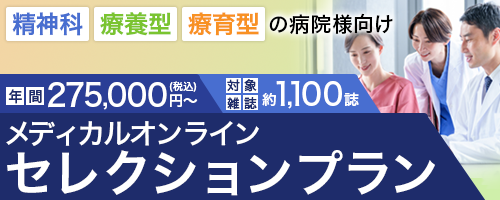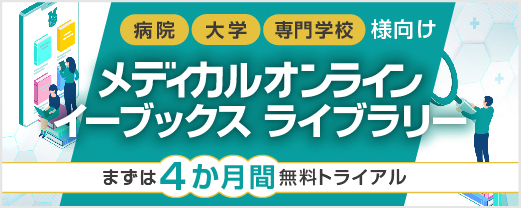アブストラクト
Japanese
| Title | 日本の救急・集中治療領域におけるエンドオブライフケア研究の動向 : マッピングレビュー |
|---|---|
| Subtitle | 総説 |
| Authors | 依田智未, 田代理沙, 小西美ゆき, 萩谷翔太, 水流添秀行, 増島麻里子 |
| Authors (kana) | |
| Organization | 千葉大学大学院看護学研究科, 千葉大学大学院看護学研究科, 千葉大学大学院看護学研究科, 千葉大学大学院看護学研究科, 千葉大学大学院看護学研究科, 千葉大学大学院看護学研究院 |
| Journal | 千葉看護学会会誌 |
| Volume | 28 |
| Number | 2 |
| Page | 9-17 |
| Year/Month | 2023 / 2 |
| Article | 報告 |
| Publisher | 千葉看護学会 |
| Abstract | 目的:日本の救急・集中治療領域でのエンドオブライフケア(以下, EOLC)研究のマッピングレビューを実施し, 研究の概要や今後の研究課題を検討すること. 方法:医中誌Web・PubMedにて, 「エンドオブライフ」, 「救急」, 「集中治療」等をキーワードとし, 2008年から2021年に公表された原著論文・文献レビューを検索した. 選定基準は「救急・集中治療領域でのEOLCに着目している」等, 除外基準は「研究対象に小児を含む」等とした. 結果:1,635件を抽出し, 46件を対象とした. 原著論文は43件(93.5%), 筆頭著者の専門領域は看護学34件(73.9%)であった. 研究デザインは質的研究と量的研究がほぼ同数であり, 研究対象は看護師25件(54.3%)等であった. 研究目的を類型化すると, 「患者・家族への看護支援」, 「医療者のEOLCへの認識や態度・困難・葛藤」等8つに大別された. 著者が明示した今後の研究課題は, 原著論文は「対象地域や対象者の拡大」や「エンドオブライフ期の患者・家族への介入・評価」等, 文献レビューも「エンドオブライフ期の家族の心理状況の把握・介入」等であった. 結論:救急・集中治療領域でのEOLC研究は, 看護学を主体として実施されていた. 今後は「患者・家族を対象とした研究」, 「看護師の感情疲労に関する研究」等, 対象者・ケア提供者双方のWell-beingを目指す研究が重要と考える. |
| Practice | 看護学 |
| Keywords | end-of-life care, emergency and intensive care fields, mapping review |
English
| Title | TRENDS IN RESEARCH ON END-OF-LIFE CARE IN THE FIELD OF EMERGENCY AND INTENSIVE CARE IN JAPAN : A MAPPING REVIEW |
|---|---|
| Subtitle | Review Articles |
| Authors | Satomi Yoda, Risa Tashiro, Miyuki Konishi, Shota Hagiya, Hideyuki Tsuruzoe, Mariko Masujima |
| Authors (kana) | |
| Organization | Graduate School of Nursing, Chiba University |
| Journal | Journal of Chiba Academy of Nursing Science |
| Volume | 28 |
| Number | 2 |
| Page | 9-17 |
| Year/Month | 2023 / 2 |
| Article | Report |
| Publisher | Chiba Academy of Nursing Science |
| Abstract | Objectives: This study aims to conduct a mapping review of studies on end-of-life care (EOLC) in the field ofemergency and intensive care in Japan and to provide an overview of extant literature and future research directionsrequired. Methods: Ichushi-Web and PubMed were searched for original studies and literature reviews published between 2008 and 2021 by combining the search terms "end of life, " "emergency, " and "intensive care." The selection criterion was "focus on EOLC in the field of emergency and intensive care, " and the exclusion criterion was "pediatric subjects." Results: In total, 1,635 articles were screened, out of which 46 articles were included in the review. Forty-three of them(93.5%) were original studies, and 34(73.9%) articles were written by first authors whose area of expertise was nursing. Qualitative and quantitative research methodologies were employed in approximately equal numbers. In 25(54.3%) studies, the research participants were nurses. The research objectives could be categorized into eight types, some of which were "Nursing support for end-of-life patients and their families, " "Medical personnel's perceptions, attitudes, difficulties, and conflicts toward EOLC." Future research was required to address topics, such as "Expansion of target areas and subjects, " and "Intervention and evaluation of end-of-life patients and their families" in the original studies and "Understanding and intervention of the psychological status of families of end-of-life patients" in the literature reviews. Conclusion: EOLC studies in the field of emergency and intensive care have been conducted mainly in nursing. Research aimed at the well-being of both end-of-life patients and EOLC providers, focused on topics such as "Patients and families as research participants" and "nurses' emotional exhaustion" will be essential in the future. |
| Practice | Nursing |
| Keywords | end-of-life care, emergency and intensive care fields, mapping review |
- 全文ダウンロード: 従量制、基本料金制の方共に770円(税込) です。
参考文献
- 1) 日本集中治療医学会ICU機能評価委員会:JIPAD年次レポート2020年度, https://www.jipad.org/images/include/report/report2020/jipad_report_2020.pdf.
- 2) 日本集中治療医学会ICU機能評価委員会:JIPAD年次レポート2020年度, https://www.jipad.org/images/include/report/report2020/jipad_report_2020.pdf.
- 3) 総務省消防庁:令和3年版 救急救助の現況I救助編, https://www.fdma.go.jp/publication/rescue/items/kkkg_r03_01_kyukyu.pdf.
- 4) 平澤博之:集中治療における重症患者の末期医療のあり方についての勧告, ICUとCCU, 33(11):793-794, 2009.
- 5) 日本救急医学会日本救急医学会救急医療における終末期医療のあり方に関する委員会:救急医療における終末期医療に関する提言(ガイドライン), へるす出版, 2010.
残りの23件を表示する
- 6) 日本救急医学会, 日本集中治療医学会, 日本循環器学会:「救急・集中治療における終末期医療に関するガイドライン〜3学会からの提言〜」, https://www.jsicm.org/pdf/1guidelines1410.pdf.
- 7) 厚生労働省:終末期医療の決定プロセスに関するガイドライン, https://www.mhlw.go.jp/shingi/2007/05/dl/s0521-11a.pdf.
- 8) 厚生労働省:人生の最終段階における医療・ケアの決定プロセスに関するガイドライン. https://www.mhlw.go.jp/file/06-Seisakujouhou-10800000-Iseikyoku/0000197721.pdf.
- 9) Cohen J., van Delden J., Mortier F., et al. :Influence of physicians'life stances on attitudes to end-of-life decisions and actual end-of-life decision-making in six countries, J Med Ethics, 34(4):247-253, 2008.
- 10) Groenewoud A. S., Sasaki N., Westert G. P., et al. :Preferences in end of life care substantially differ between the Netherlands and Japan:Results from a cross-sectional survey study, Medicine(Baltimore), 99(44):e22743-e22743, 2020.
- 11) Avidan A., Sprung C. L., Schefold J. C., et al. :Variations in end-of-life practices in intensive care units worldwide(Ethicus-2):a prospective observational study, Lancet Respir Med, 9(10):1101-1110, 2021.
- 12) 宮下光令:1章 緩和ケア概論2節緩和ケアとは何か4. 緩和ケアと関連する言葉の定義, ナーシング・グラフィカ成人看護学(6)緩和ケア(宮下光令編), 第3版, メディカ出版, 27, 2022.
- 13) Grant M. J., Booth A. :A typology of reviews:an analysis of 14 review types and associated methodologies, Health Info Libr J, 26(2):91-108, 2009.
- 14) Cooper I. D. :What is a "mapping study?", J Med Libr Assoc, 104(1):76, 2016.
- 15) 厚生労働省:終末期医療の決定プロセスに関するガイドライン, https://www.mhlw.go.jp/shingi/2007/05/dl/s0521-11a.pdf.
- 16) Page M. J., McKenzie J. E., Bossuyt P. M., et al. :The PRISMA 2020 statement:an updated guideline for reporting systematic reviews, BMJ, 372:n71, 2021.
- 17) 大学病院医療情報ネットワークセンター:専門分野別一覧, https://www.umin.ac.jp/ac/senmon/.
- 18) 国立研究開発法人科学技術振興機構:researchmap, https://researchmap.jp.
- 19) 日本緩和医療学会:第27回日本緩和医療学会学術集会演題カテゴリー, https://plaza.umin.ac.jp/jspm2022/abstracts/abst_cate.html.
- 20) 厚生労働省:終末期医療の決定プロセスに関するガイドライン, https://www.mhlw.go.jp/shingi/2007/05/dl/s0521-11a.pdf.
- 21) 増島麻里子:第2章エンド・オブ・ライフケアが必要とされる日本の社会的背景6. 日本および世界におけるエンド・オブ・ライフケア研究の動向, 看護実践にいかすエンド・オブ・ライフケア(長江弘子編), 第2版, 日本看護協会出版会, 55, 2018.
- 22) 厚生労働省:人生の最終段階における医療・ケアの決定プロセスに関するガイドライン. https://www.mhlw.go.jp/file/06-Seisakujouhou-10800000-Iseikyoku/0000197721.pdf.
- 23) 立野淳子, 山勢博彰, 田戸朝美, 他:わが国のICUにおける終末期ケアの現状と医療者の認識, 日クリティカルケア看会誌, 10(3):22-33, 2014.
- 24) 高田望, 平野かよ子:集中治療室における医師と看護師の「終末期医療へのシフト」の判断の様相, 日クリティカルケア看会誌, 11(3):67-75, 2015.
- 25) Dodek P. M., Wong H., Norena M., et al. :Moral distress in intensive care unit professionals is associated with profession, age, and years of experience, J Crit Care, 31(1):178-182, 2016.
- 26) 森田達也:グッドデス概念を使って難しい状況を理解しよう(第1回)グッドデス概念って何?, 緩和ケア, 21(6):632-635, 2011.
- 27) 百田武司, 木村勇喜, 中山奨:日本の集中治療室における面会の実態調査(第1報)面会の機会拡大に向けての検討, 日赤広島看大紀, 14:19-27, 2014.
- 28) Wendlandt B., Kime M., Carson S. :The impact of family visitor restrictions on healthcare workers in the ICU during the COVID-19 pandemic, Intensive Crit Care Nurs, 68:103123, 2022.



